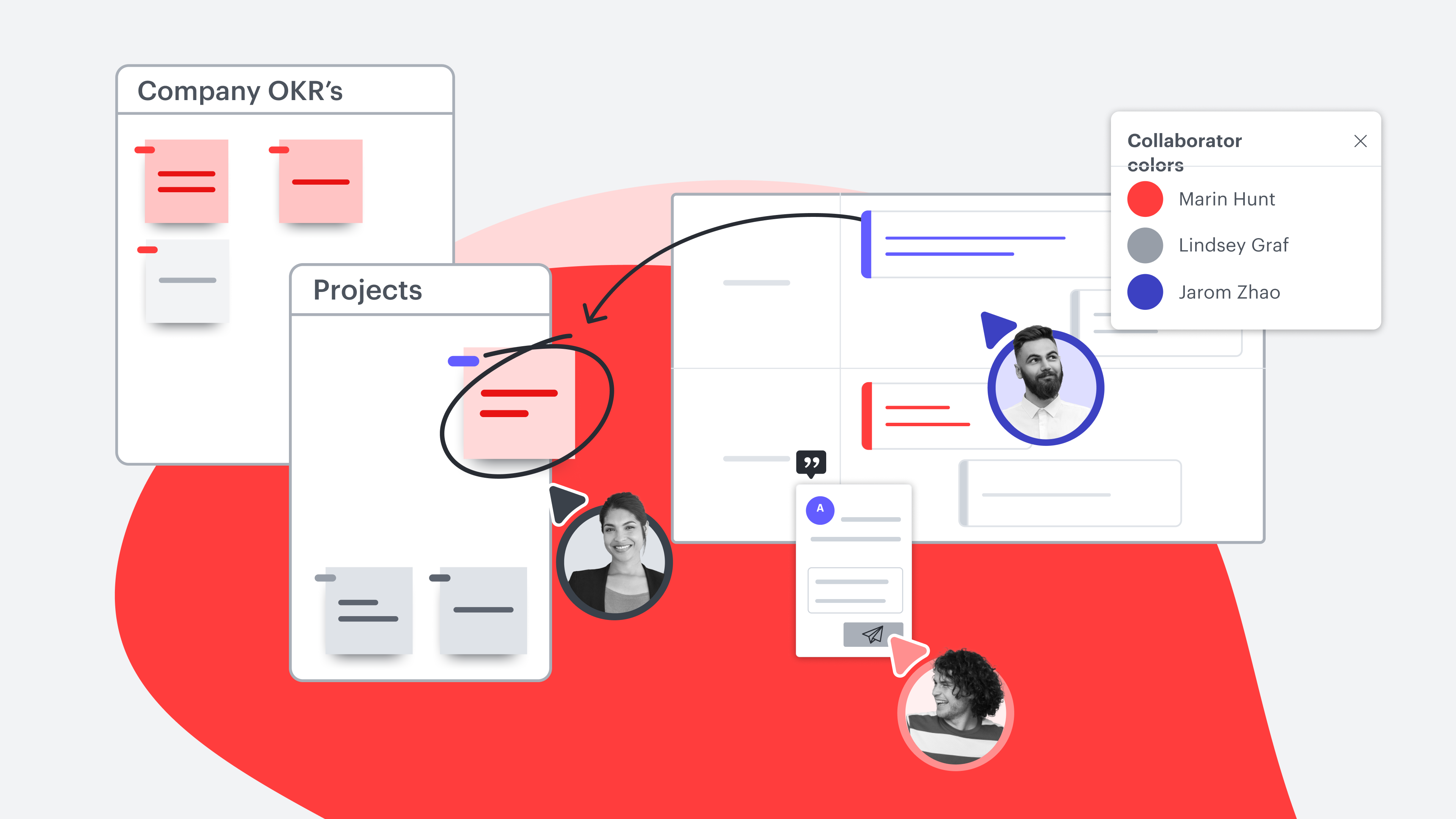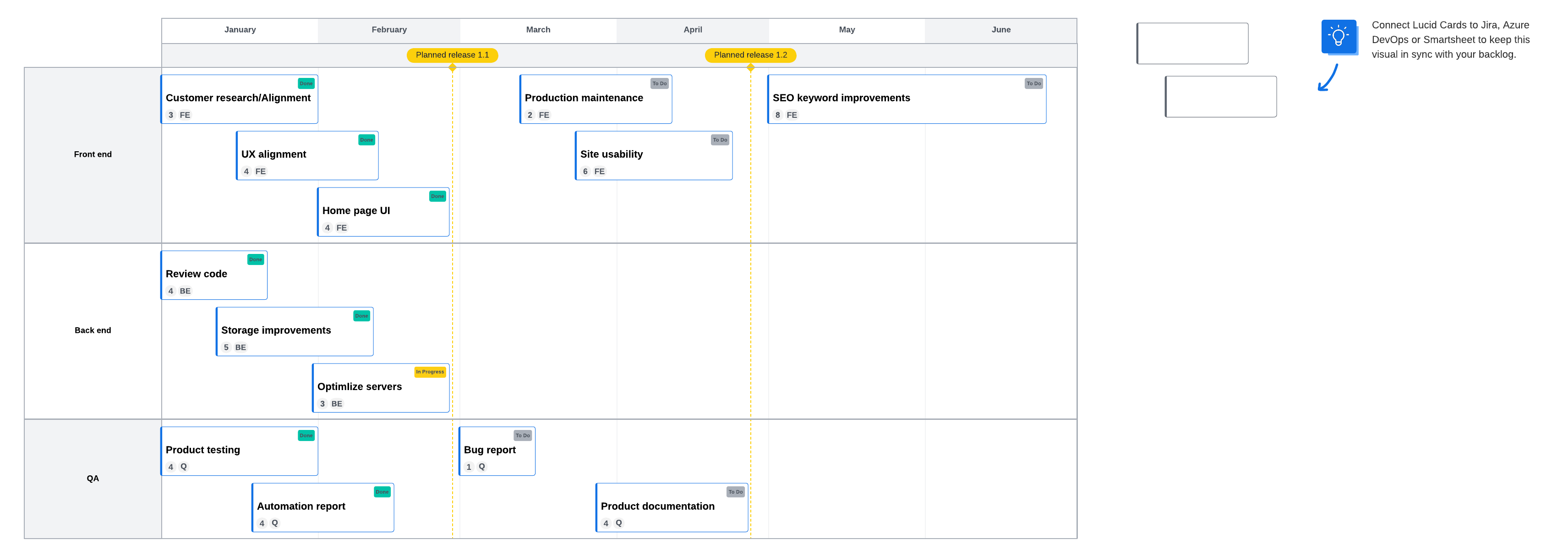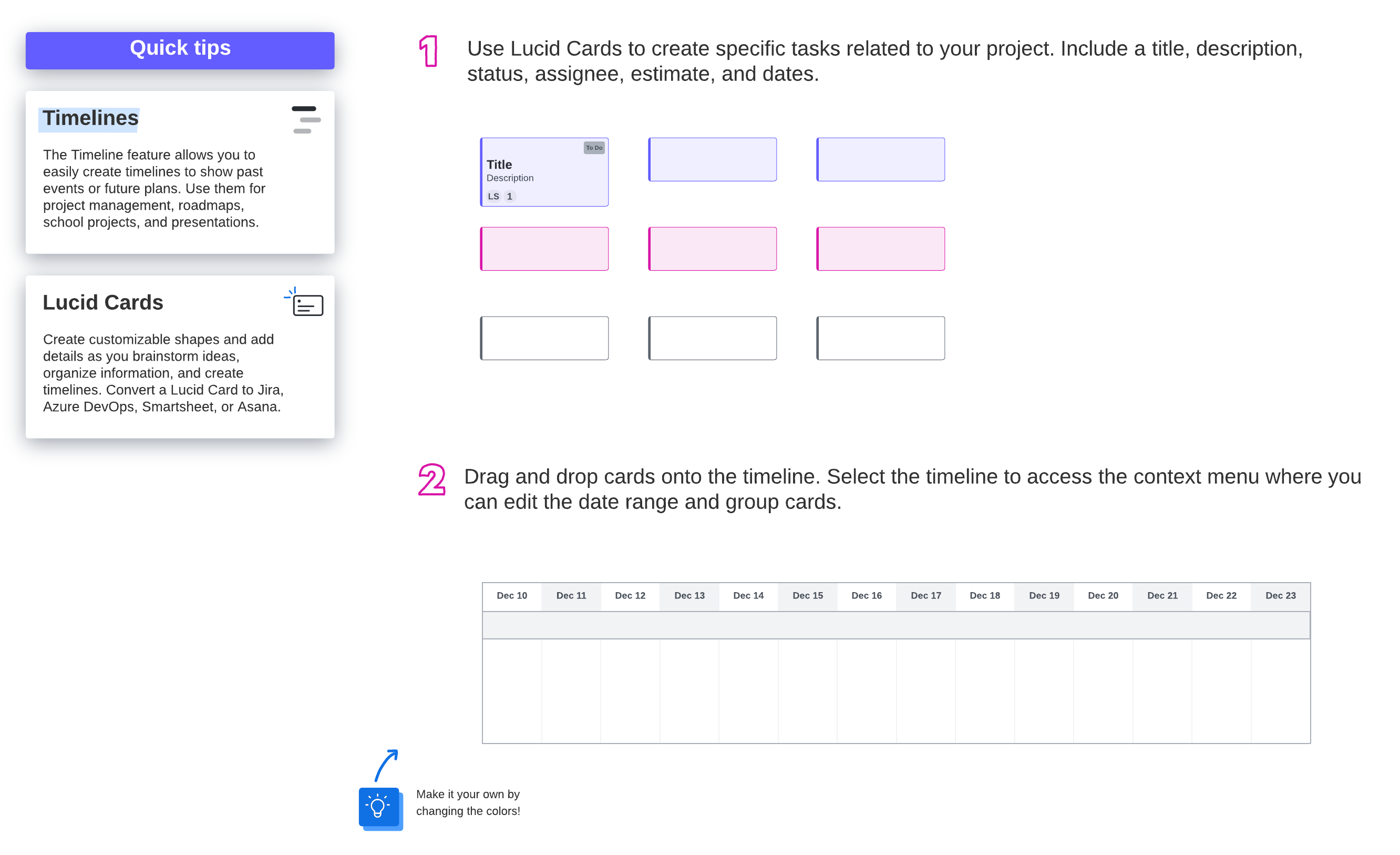
How to develop an effective action plan
Reading time: about 5 min
Pretend for a moment you’re a villain intent on capturing San Francisco and turning the entire city into your headquarters. You gather your villain friends, set a target date, and then...well, you’re not sure. Because you really didn’t think this through. If you had, you would have broken down your goal into smaller, bite-sized tasks.
Action plans are a great way to meet your goals, whether you’re trying to pull off devious schemes or just make sure your team delivers a software update on time.
You may be familiar with using action plans on an individual level, but they’re also great if you’re a project manager trying to avoid missed deadlines, unmet goals, or slow progress. Using an effective action plan can minimize these issues, and Lucidspark can help develop such a plan through collaborative team ideation and planning. We’ll show you how to develop an action plan that will make your life a little easier.
What is an action plan?
An action plan is basically a recipe for achieving a goal. It breaks down a goal into tasks—or steps—with individual deadlines so that you meet your overall deadline for reaching the goal. We recommend making this a document that is stored in the cloud so that anyone can access it at any time from anywhere.
Components of an action plan
All action plans will contain a set of similar items:
- A list of the tasks or steps necessary to achieve the final goal
- A schedule with a start/end date for each of the above tasks
- The resources needed for each step
- A list of the people assigned to each step
- A designation of the departments that will need to be involved for each task
- A contingency plan if things go awry
Why action plans are beneficial
Let’s go back to our scenario of capturing San Francisco. You and your villain friends may be tempted to just wing it—after all, you’re the bad guys and you don’t like rules or plans. But that poses a tremendous risk. What if the good guys show up? What if you get dehydrated (latex isn’t breathable)? What if you can’t find parking? These are all things that could have been avoided with an action plan.
And sure, writing an action plan takes time. But spending time to develop an action plan is worth it. Here are some reasons why:
- Clear direction: Having an action plan means you’re never left wondering what to do next. And knowing what to do next saves time in the long run.
- Motivating goals: If you don’t know where you’re going, you’ll have very little motivation to get started. With a clear plan in place, your team will be empowered to begin moving toward the finish line.
- Trackable progress: In complicated, drawn-out processes, it’s difficult to feel like any work is getting done. An action plan is an impartial unit of measurement that gives you a way to easily track the progress being made.
- Prioritize task lists: When you have a written action plan, you can easily see which steps are dependent on other steps and rearrange accordingly.
How to write an action plan
So we’ve convinced you to write an action plan before embarking on your quest. Here’s how to do it:
Set SMART goals

SMART goals are not just the opposite of dumb goals—the term is actually an acronym:
- Specific: When it comes to action plans, narrow goals are more effective.
- Measurable: If you can’t measure something, you can’t know when it’s finished. Define how you’ll be measuring progress.
- Attainable: Make sure your goals can be realistically completed within the given timeframe.
- Relevant: Each goal should align with your business values and long-term objectives.
- Time-based: Each task needs a realistic deadline. It should be motivating yet ambitious.

Create a list of actions
You already have some idea of what your team needs to do to accomplish its goals. Now, it's just a matter of refining those ideas.
Start by making a rough outline of what you’ll need to do to reach your goal. Say you want to release a new version of your app by the end of the year. You know you’ll need to plan out new features, code them, and then launch. Write that down, then further refine the steps involved in each of those steps. Then refine steps for each of those steps. Continue that process until you reach the sweet spot of steps that are granular, but not too granular. The easiest thing is to use a template to guide you through this process.

Prioritize tasks and set timelines
Now that you’ve gotten a solid list of tasks down, it’s time to get them in the right order. List out tasks that have no dependencies first, then work your way to the tasks that have the most dependencies.

Designate resources and responsibilities
Determine who is best for completing each of the tasks you’ve outlined, based on skill level and bandwidth. Each task will have a person in charge of that task as well as a list of what resources they’ll need (money, time, prior documentation, etc.).
Visualize an action plan for team and stakeholders
You’ll need to get buy-in from your stakeholders, and they’re much more likely to do that if they see the roadmap for a goal laid out in front of them.
Lucidspark makes presenting action plans very easy: You’ll simply fill out the action plan template and then share the link to the template with everyone. You can update the plan with changes in real time, so no one has an out-of-date action plan template. Best of all, because the team and stakeholders have access to the plan before they get started, they can offer advice and perspectives early and often.
Monitor progress
Part of the above plan also needs to include how you’ll be keeping everyone informed throughout the process. Will you send out weekly emails? Regular meetings? Are you using a task management system? There can be quantitative or qualitative measurements (or a combo of both), but this needs to be outlined before the project gets started.
An action plan can quickly become the backbone of your project. It helps ease worries and make projects unfold much more easily. With a cloud-based action plan, there’s no confusion over who’s doing what and what it’s going to take to reach the final goal. You can also use a project planning template to guide you through the entire process.

Bring your best ideas to light and carry out your plan.
Get started with LucidsparkAbout Lucidspark
Lucidspark, a cloud-based virtual whiteboard, is a core component of Lucid Software's Visual Collaboration Suite. This cutting-edge digital canvas brings teams together to brainstorm, collaborate, and consolidate collective thinking into actionable next steps—all in real time. Lucid is proud to serve top businesses around the world, including customers such as Google, GE, and NBC Universal, and 99% of the Fortune 500. Lucid partners with industry leaders, including Google, Atlassian, and Microsoft. Since its founding, Lucid has received numerous awards for its products, business, and workplace culture. For more information, visit lucidspark.com.
Related articles
Key components of a strategic plan
In this article, we’ll walk through how your strategic plan can help you establish your company vision and mission and determine where your organization needs to go and what you need to do to get there.
How to write an implementation plan
Learn how to make an effective implementation plan that will keep your projects and initiatives running smoothly.
What is operational planning?
Operational planning is fairly granular. While strategic planning focuses primarily on the what of your business, operational planning focuses on the how.
